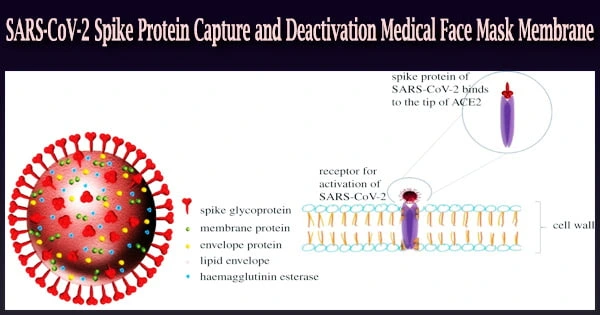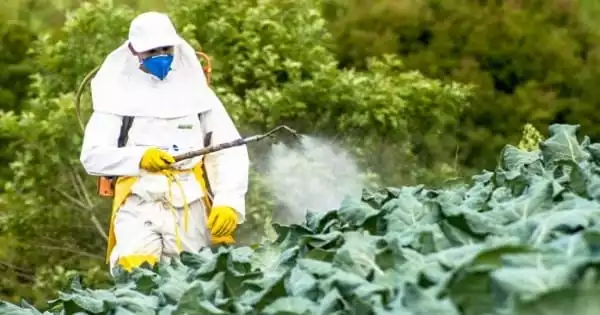Dibakar Bhattacharyya, Ph.D., and Rollie Mills, a Ph.D. student in his lab at the University of Kentucky, have assembled a team of scientists to create a medical face mask membrane that can collect and inactivate the SARS-CoV-2 spike protein upon contact.
Bhattacharyya, better known by his friends and coworkers as “DB,” and other UK collaborators from several academic fields were given funding by the National Science Foundation (NSF) to produce the materials at the start of the COVID-19 pandemic in 2020. On May 24, 2022, their research was published in the Communications Materials issue of Nature magazine.
Spike proteins on SARS-CoV-2 enable the virus to penetrate host cells after it has already entered the body. The group created a membrane with proteolytic enzymes that bind to the protein spikes and render them inactive.
“This new material can filter out the virus like the N95 mask does, but also includes antiviral enzymes that completely deactivate it. This innovation is another layer of protection against SARS-CoV-2 that can help prevent the virus from spreading,” said DB, the director of UK’s Center of Membrane Sciences. “It’s promising to the development of new products that can protect against SARS-CoV-2 and a number of other human pathogenic viruses.”
J. Todd Hastings, Ph.D., Thomas Dziubla, Ph.D., and Kevin Baldridge, Ph.D., from the College of Engineering; Yinan Wei, Ph.D., a former professor from the Department of Chemistry in the College of Arts and Sciences; and Lou Hersh, Ph.D., from the Department of Molecular and Cellular Biochemistry in the College of Medicine made up DB’s team.
Rollie Mills, a doctorate candidate in the College of Engineering, was the project’s primary author and an NSF Graduate Fellow. Other major contributors included undergraduates Ronald Vogler, Matthew Bernard, and Jacob Concolino.
This new material can filter out the virus like the N95 mask does, but also includes antiviral enzymes that completely deactivate it. This innovation is another layer of protection against SARS-CoV-2 that can help prevent the virus from spreading. It’s promising to the development of new products that can protect against SARS-CoV-2 and a number of other human pathogenic viruses.
Dibakar Bhattacharyya
The membrane was created by the team and manufactured as a result of an ongoing partnership with a significant membrane manufacturer. Then, it was put to the test using synthetic particles with immobilized SARS-CoV-2 spike proteins.
The substance had the ability to destroy the spike proteins within 30 seconds of contact, in addition to filtering out aerosols the size of coronaviruses.
According to the study, the membrane could filter at least 95% of airborne particles and offered protection above the Occupational Safety and Health Administration’s threshold for N95 masks.
“These membranes have been proven to be a promising system of advancement toward the new generation of respiratory face masks and enclosed-environment filters that can significantly reduce coronavirus transmission by virus protein deactivation and enhanced aerosol particle capture,” the study reports.
The new membrane expands on the National Institute of Environmental Health Sciences (NIEHS) and NSF-funded activities carried out at the center that resulted in the development of several functionalized membranes for environmental remediation. Functionalized membranes offer further advantages over passive membranes by selectively binding or deactivating unwanted particles like viruses.
















